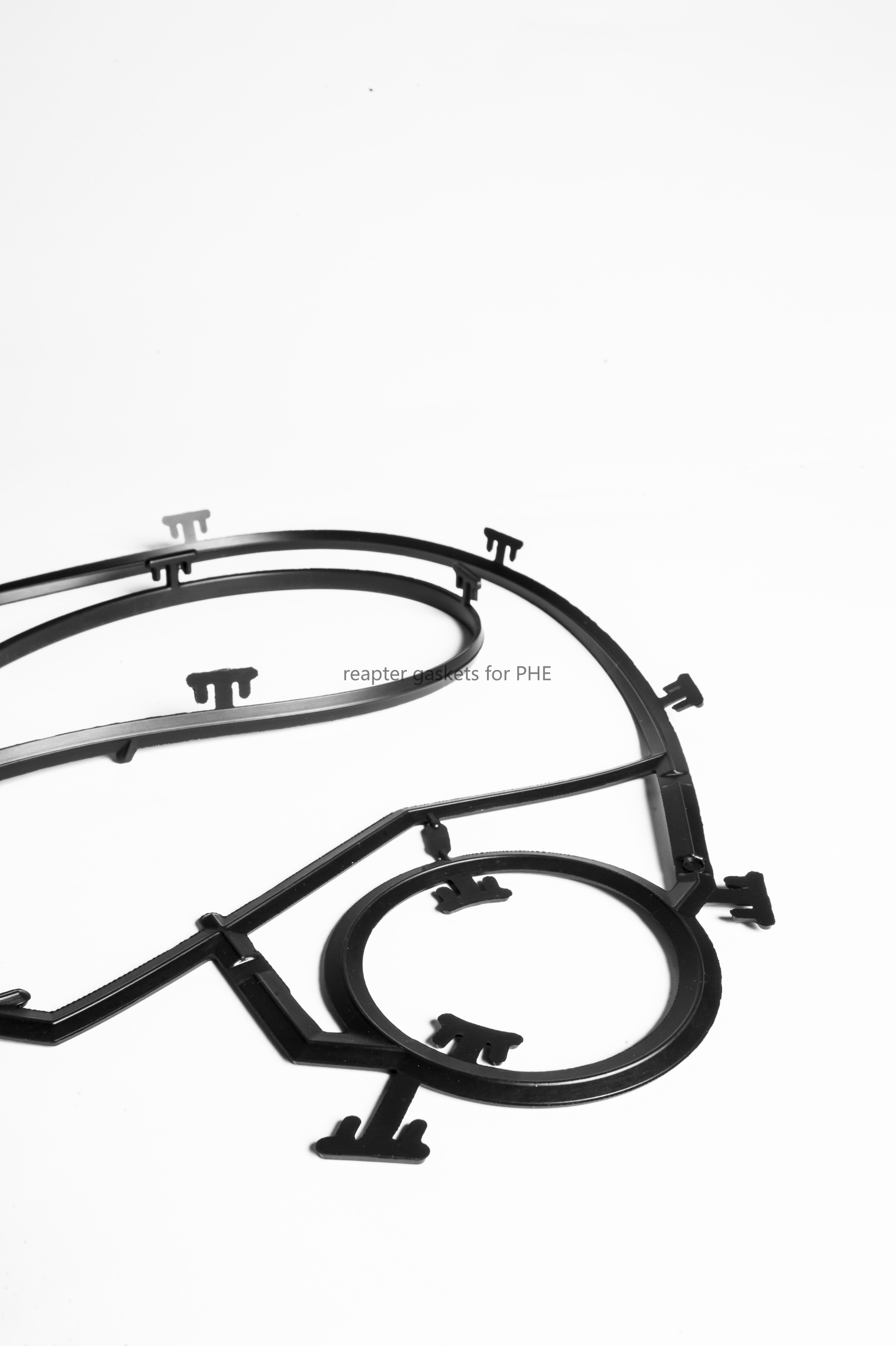Plate heat exchanger manufacturers to reveal your secret - plate heat exchanger rubber gasket processing technology
Plate heat exchanger gaskets are an important part of the heat exchanger and have a significant impact on the service life of the plate heat exchanger; if these gaskets harden and lose their elasticity, they can lead to heat exchanger failure. Therefore, the sealing adhesive gasket is the most important and demanding accessory in the plate heat exchanger. The following is a brief introduction to the plate heat exchanger adhesive gasket processing process Qingdao Ruipute.
 Rubber is a relatively complex polymer system, usually consists of rubber polymers, curing agent, filler, antioxidant, processing aids and thinners, etc. Although processing aids can not extend the life of rubber gaskets, but they can be used in the gasket manufacturing process to improve, extrusion and molding properties play a big role, the choice of raw materials and their proportion will determine the final performance of the rubber gasket material. Among them, natural rubber is made from latex of the Brazilian rubber tree and its basic chemical composition is cis-polyisoprene. Isoprene is a highly cis synthetic rubber made from isoprene. It is also known as synthetic natural rubber because of its similarity in structure and properties to natural rubber. Styrene-butadiene rubber is made by copolymerizing styrene with butadiene. According to the production method, it is divided into emulsion polymerized styrene butadiene rubber and solution polymerized styrene butadiene rubber. Butadiene rubber is produced by butadiene polymerization, compared with other general-purpose rubber, vulcanized butadiene rubber cold resistance, abrasion resistance and elasticity is much better, less heat under dynamic load, good aging resistance, easy and natural rubber, neoprene rubber, nitrile rubber and so on and use.
Rubber is a relatively complex polymer system, usually consists of rubber polymers, curing agent, filler, antioxidant, processing aids and thinners, etc. Although processing aids can not extend the life of rubber gaskets, but they can be used in the gasket manufacturing process to improve, extrusion and molding properties play a big role, the choice of raw materials and their proportion will determine the final performance of the rubber gasket material. Among them, natural rubber is made from latex of the Brazilian rubber tree and its basic chemical composition is cis-polyisoprene. Isoprene is a highly cis synthetic rubber made from isoprene. It is also known as synthetic natural rubber because of its similarity in structure and properties to natural rubber. Styrene-butadiene rubber is made by copolymerizing styrene with butadiene. According to the production method, it is divided into emulsion polymerized styrene butadiene rubber and solution polymerized styrene butadiene rubber. Butadiene rubber is produced by butadiene polymerization, compared with other general-purpose rubber, vulcanized butadiene rubber cold resistance, abrasion resistance and elasticity is much better, less heat under dynamic load, good aging resistance, easy and natural rubber, neoprene rubber, nitrile rubber and so on and use.
Usually, the manufacturing process of plate heat exchanger sealing gaskets includes five process steps.
1. The mixing step for mixing rubber, i.e. mixing various raw materials and auxiliary materials according to the formula.
2. Formation of rubber material blanks, i.e., rubber gaskets made of rubber material through extruder devices.
3. in the forming step, the vulcanized rubber gasket is placed in the cavity of the hot die, the die is closed for vulcanization, and the rubber gasket is formed in the stamping equipment.
4. After vulcanization, the vulcanized gasket is placed statically in the oven to complete the vulcanization.
5. Finished product inspection, that is, according to process standards to take out some finished products for finished product inspection.
Ruipute Ltd., as a plate heat exchanger manufacturer, the production of plate heat exchanger tape in strict accordance with the U.S. ASME standards and European CE standards, the domestic business is mainly to face the high-end customers of imported plate heat exchanger and the replacement of accessories, the company's quality level and the level of technical service has been widely praised by customers at home and abroad. Welcome customers to contact us to discuss.
Related information
- Have you chosen the right food grade plate heat exchanger manufacturer?
- Plate heat exchanger plate and rubber gasket aging causes and effects
- Plate heat exchangers in the food industry are widely used!
- A special plate heat exchanger for heat transfer in the health field meets your extreme imagination in this factory
- Plate for plate heat exchanger is corroded again? Mastering these points allows you to reduce losses
- What should i pay attention to when choosing a wide gap plate heat exchanger?
Relevant article
- 1
- Can plate heat exchanger be directly used for feed water heating or cooling?
- Why the heat transfer efficiency of plate heat exchangers in the heating industry is low
- How to determine the size and angle of plate heat exchanger plate?
- What is the proportion of pressure drop in the selection of plate heat exchanger?
- Why do we recommend food grade plate heat exchanger for beer brewing and fermentation? What should we pay attention to?
- What is the difference between the hanging holes on the plate of plate heat exchanger?
- What are the applications of plate and shell heat exchanger in the field of petroleum refining
- What is the key to the manufacture of plate heat exchangers with small temperature differences?
- How to descale the plate heat exchanger? What problems should be paid attention to during use?
Latest information
- Heat station supporting plate heat exchanger installation is a technical work, these points should be noted
- Sulfuric acid and other corrosive media for industrial plate heat exchanger requirements are what
- Simple and effective chemical cleaning method of coal chemical plate heat exchanger, can effectively improve efficiency
- A high-quality petrochemical plate heat exchanger in the production of what to consider
- These causes of chemical plate heat exchanger gasket aging you may not know
- Chemical plant plate heat exchanger, sulfuric acid cooling needs attention
- High-end plate heat exchanger customization, specifically for your special working conditions
- The working principle of gasket type industrial plate heat exchanger and the scenarios of its use are worth knowing in depth
- Still worrying about the wholesale price of industrial plate heat exchangers? An article to make you no longer tangled
- The original lubricant in the chemical plate heat exchanger plays so many roles!








